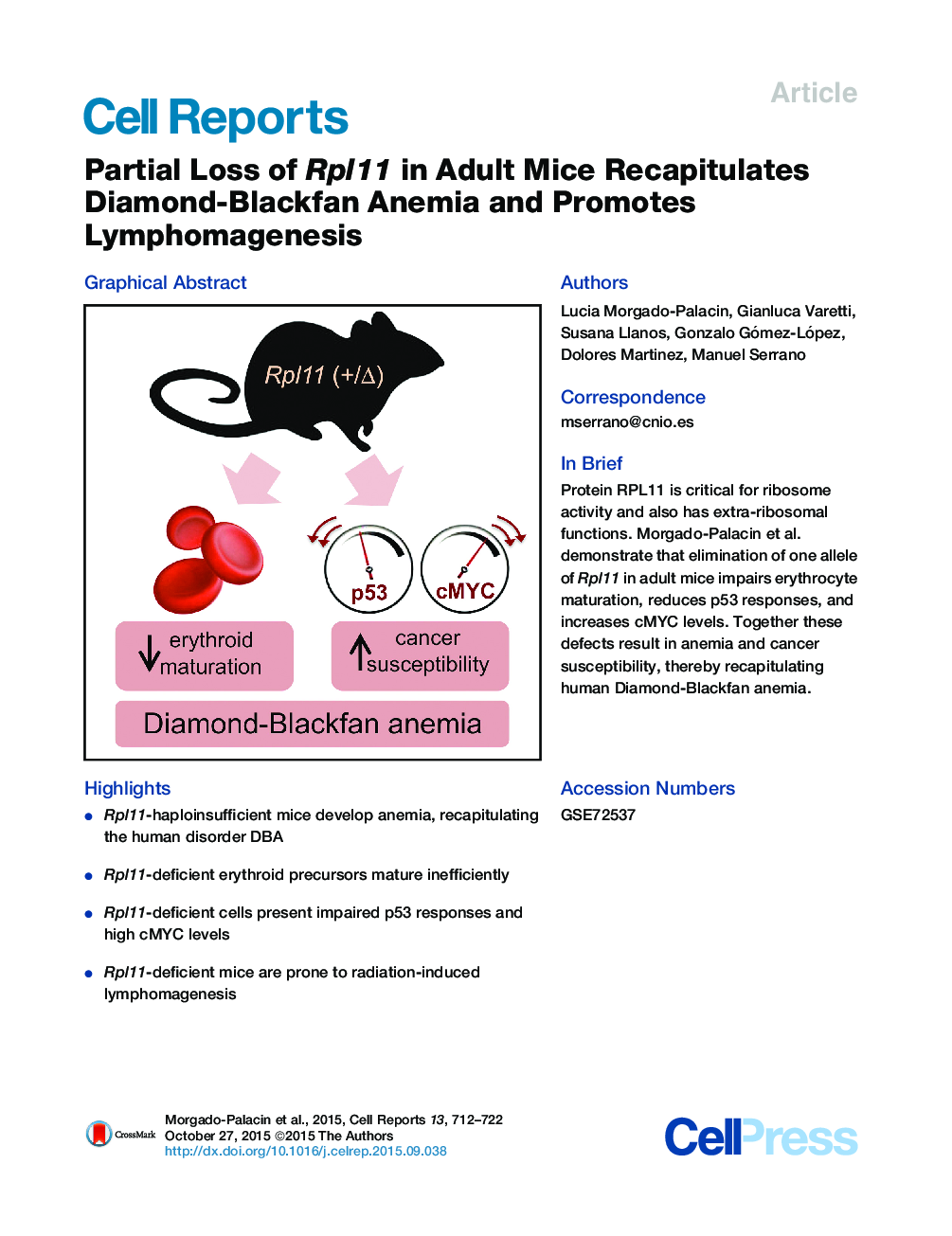| Article ID | Journal | Published Year | Pages | File Type |
|---|---|---|---|---|
| 2039392 | Cell Reports | 2015 | 11 Pages |
•Rpl11-haploinsufficient mice develop anemia, recapitulating the human disorder DBA•Rpl11-deficient erythroid precursors mature inefficiently•Rpl11-deficient cells present impaired p53 responses and high cMYC levels•Rpl11-deficient mice are prone to radiation-induced lymphomagenesis
SummaryDiamond-Blackfan anemia (DBA) is characterized by anemia and cancer susceptibility and is caused by mutations in ribosomal genes, including RPL11. Here, we report that Rpl11-heterozygous mouse embryos are not viable and that Rpl11 homozygous deletion in adult mice results in death within a few weeks, accompanied by bone marrow aplasia and intestinal atrophy. Importantly, Rpl11 heterozygous deletion in adult mice results in anemia associated with decreased erythroid progenitors and defective erythroid maturation. These defects are also present in mice transplanted with inducible heterozygous Rpl11 bone marrow and, therefore, are intrinsic to the hematopoietic system. Additionally, heterozygous Rpl11 mice present increased susceptibility to radiation-induced lymphomagenesis. In this regard, total or partial deletion of Rpl11 compromises p53 activation upon ribosomal stress or DNA damage in fibroblasts. Moreover, fibroblasts and hematopoietic tissues from heterozygous Rpl11 mice present higher basal cMYC levels. We conclude that Rpl11-deficient mice recapitulate DBA disorder, including cancer predisposition.
Graphical AbstractFigure optionsDownload full-size imageDownload as PowerPoint slide
